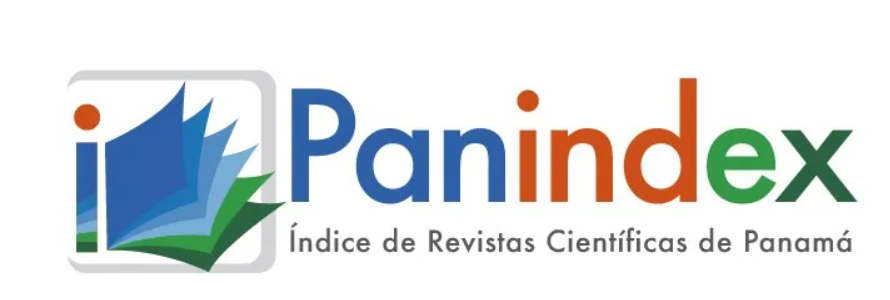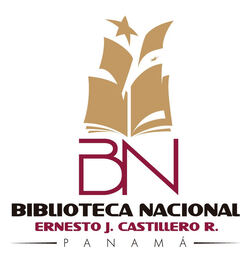The content of the publications and the links suggested in them are the sole responsibility of the authors and not of the Metropolitan University of Education, Science and Technology (UMECIT) or of the journal ORATORES. They are protected by international copyright laws as well as the logos of UMECIT AND ORATORES, hence their reproduction is totally prohibited.
This work is licensed under a Creative Commons Attribution-NonCommercial-NoDerivatives 4.0 International License.
The authors maintain the copyright and transfer the right of the first publication to the journal, with the article registered with Creative Commons Attribution-NonCommercial-NoDerivatives License, which allow others They can download the works published in this magazine and share them with other people, as long as their authorship is recognized, but they cannot be changed in any way nor can they be used commercially.
Authors are recommended to include their work in social networks such as Researchgate and institutional repositories once the article or visible fact has been published on the journal page, without forgetting to include the digital document identifier and the name of the journal.



Abstract
The purpose of this article is to describe the environmental protection processes planned by governmental and non-governmental organizations to conserve wetland-type environmental territories. To this end, this document presents, by way of introduction, worldwide actions to face the climate crisis and the environmental damages the planet is facing. Then a classification and subsequent conceptual tour of the existing bodies of water in the world, the problems they face due to the effects of pollution and the strategies that some nations and multinational companies have used to mitigate such impact is made. Therefore, for the development of the study, a qualitative approach and descriptive research method was chosen through documentary review strategies from the international and national levels, as well as contributions from local institutional projects. This documentary review is of utmost importance because it shows the need, on the one hand, to know which are the governmental and non-governmental policies aimed at the protection of water bodies. On the other hand, it invites to empowerment and participation in projects and activities that seek to mitigate the human footprint on the environment. The results of the analysis shows that the main promoter of strategies against environmental deterioration is the United Nations (UN) and its proposal for environmental sustainability through the Sustainable Development Goals (SDGs), a plan that is joined by some companies and Non-Governmental Organizations (NGOs). However, some nations with their economic policies put large industries and the overexploitation of natural resources above the good of the community.
Keywords
References
Balagué, V. (2023). Microbiología marina: lo esencial es invisible a nuestros ojos. http://hdl.handle.net/10261/297002
Banco Internacional de Reconstrucción y Fomento. (6 de marzo de 2019). Convivir con basura: el futuro que no queremos. Bancomundial.org. https://www.bancomundial.org/es/news/feature/2019/03/06/convivir-con-basura-el-futuro-que-no-queremos
BBC NEWS (2018). Por qué 2030 es la fecha límite de la humanidad para evitar una catástrofe global. bbc.com. https://www.bbc.com/mundo/noticias-45785972
Bernal, D. (2017). Los humedales de Bogotá: un mosaico de biodiversidad y conflictos socioambientales. razonpublica. https://razonpublica.com/los-humedales-de-bogota-un-mosaico-de-biodiversidad-y-conflictos-socioambientales/
Beuf, A. (2012). Concepción de centralidades urbanas y planeación del crecimiento urbano en la Bogotá de siglo XX. Consultado en: http://www. ub. edu/geocrit/coloquio2012/actas/07-A-Beuf. pdf.
Bevilacqua, R. (2017). ¿Qué son los sitios Ramsar y por qué son tan importantes? Ladera Sur. Tomado de: https://laderasur.com/articulo/que-son-los-sitios-ramsar-y-por-que-son-tan-importantes/
Bruna, M. I. (2020). El deterioro del medio ambiente y su relación con la desinformación (Bachelor’s thesis, Quito). [Universidad San Francisco de Quito USFQ]. http://repositorio.usfq.edu.ec/handle/23000/9230.
Cedeño, G., Crooks, K., Soto, M., Terán, N., & Walters, A. (2022). Conciencia Ambiental frente al inadecuado manejo del plástico por el ser humano. Las Enfermeras de hoy, 1(2), 44-58.
CBS News. (2022). Obama speaks at COP26 climate Summit. [Video]. Obama speaks at COP26 climate summit | full video - YouTube
Duarte, C. M. (2010). Océano: El secreto del planeta tierra (Vol. 13). Editorial CSIC-CSIC Press.
Elías, R. (2015). Mar del plástico: una revisión del plástico en el mar. Rev. Invest. Desarr. Pesq. 27: 83-105.
Elosegui, A. (Ed.). (2009). Conceptos y técnicas en ecología fluvial. Fundación BBVA.
Escobar, J. (2003). La contaminación de los ríos y sus efectos en las áreas costeras y el mar. Chile: CEPAL, División de Recursos Naturales e Infraestructura.
Estenssoro, F., Vásquez, J., & Carrasco, A. (2021). La instalación de la crisis ambiental global en el discurso de la seguridad nacional de Estados Unidos. Desde la Guerra Fría hasta la segunda década del Siglo XXI. Encrucijada Americana, 13(1), 94,112
Franco-Urquiza, E., Ferrando, H. E., Luis, D. P., & Maspoch, M. L. (2016). Reciclado mecánico de residuos plásticos. Caso práctico: Poliestireno de alto impacto para la fabricación de componentes de TV. Afinidad, 73(575).
García, R. R. (2020). La construcción de las Pirámides de Egipto, evolución de la civilización y el cambio climático. Tekhné, 23(3).
Gates, B. (2021). How to avoid a climate disaster: the solutions we have and the breakthroughs we need. Vintage.
Godoy, M. I. T. (2019). Promoción del uso responsable del agua potable desde los planes educativo-ambiental. Propuestas investigativas, 1(2), 138-153.
Grethy, M. G. (2020). Desarrollo sostenible y políticas públicas: enfoque de la ONU y ecología política. Revista Ciencia Jurídica y Política, 6(12), 73-87.
Intergovernmental Panel on Climate Change (IPCC), (2022). Climate Change 2022: Impacts, Adaptation and Vulnerability. Report multimedia. https://report.ipcc.ch/ar6syr/pdf/IPCC_AR6_SYR_LongerReport.pdf
Jaimes-Niño, Á. (2011). Conflictos del desarrollo urbano Bogotá en la cuenca del Rio Salitre: reflexiones y propuestas para un diseño urbano de integración y conectividad ecológica. Uniandes.
Kandus, P., & Minotti, P. G. (2018). Vivir sin humedales. Aguas + Humedales. 1a ed. San Martín: Universidad Nacional de San Martín (UNSAM Edita). (pp 153-173).
Leick, G. (2002). Mesopotamia: la invención de la ciudad. Ediciones Paidós, Ibérica.
Lemos, J. E. (2018). EL CUIDADO DEL AGUA. Una propuesta Pedagógica de Educación Ambiental, desde la perspectiva Biocéntrica, basada en la cosmovisión de las etnias Cubeos, Jiw, Piratapuyos y Tuyucas. (Tesis doctoral, Bogotá). Universidad Santo Tomás, Colombia.
Martín, V. J. P. (2002) La ingeniería de los ríos. UPC, S.L. ediciones.
Meijer, L. J., Van Emmerik, T., Van Der Ent, R., Schmidt, C., & Lebreton, L. (2021). More than 1000 rivers account for 80% of global riverine plastic emissions into the ocean. Science Advances, 7(18).
Mena, R. M. (29 de marzo de 2022). Generación de residuos. Un mundo de residuos. es.statista.com. https://es.statista.com/grafico/27140/desechos-solidos-municipales-generados-per-capita-al-ano/
Miranda, B. (8 de febrero de 2019). Hidroituango seca el río Cauca: cómo la controversial represa redujo en 80% el caudal del segundo río de Colombia. bbc.com. https://www.bbc.com/mundo/noticias-america-latina-47169139
Organización de Naciones Unidas (ONU). (2018), La Agenda 2030 y los Objetivos de Desarrollo Sostenible: una oportunidad para América Latina y el Caribe. Santiago, Chile.
Preciado, B. J. (2005). La gestión ambiental urbana y el agua potable en la ciudad de Bogotá. Tecnogestión: Una mirada al ambiente, 2(1). https://revistas.udistrital.edu.co/index.php/tecges/article/view/4318
Rivera, C., Contreras, F., Ariza, W., Bonilla, S., & Cruz, A. (2019). Los empaques biodegradables, una respuesta a la consciencia ambiental de los consumidores. Realidad Empresarial, (7), 2–8. https://doi.org/10.5377/reuca.v0i7.7830
Romero, M. S. (2022). Reutilización y reciclaje de elementos o materiales de plástico en arquitectura: buenas prácticas en España (Doctoral dissertation, Universitat Politècnica de València).
Salas, T. A. (s. f). El ayer y el hoy de los humedales de Bogotá. Fundación Humedales de Bogotá. Recuperado de: https://humedalesbogota.com/2013/11/12/el-ayer-y-el-hoy-de-los-humedales-de-bogota/ 8 de mayo de 2023
Salas, E., & Maldonado, E. (2019). Breve historia de la ciencia del cambio climático y la respuesta política global: un análisis contextual. KnE Engineering, 5(2), 717-738.
Sanchez-Gutierrez, F. O. (2021). Retos pos pandemia en la gestión de residuos sólidos. CienciAmérica, 10(1), 11-23.
TED. (2016). The case for optimism on climate change. [Video]. Al Gore: The case for optimism on climate change | TED Talk
UN Climate Change. (7 de nov de 2022). Al Gore at the Opening of the #COP27 World Leaders Summit | UN Climate Change. [Video]. Al Gore at the Opening of the #COP27 World Leaders Summit | UN Climate Change - YouTube
Vargas, G. R. (2021). Funcionalismo. Revista de la Facultad de Derecho y Ciencias Sociales y Políticas, (9), 185-208.
Wilches-Chaux, G. (2017). El concepto-herramienta de la seguridad territorial y la gestión de humedales. Biodiversidad en la Práctica, 2(1), 48-86.
Downloads
Publication Facts
Reviewer profiles N/A
Author statements
- Academic society
- Universidad Metropolitana de Educación, Ciencia y Tecnología
- Publisher
- Universidad Metropolitana de Educación, Ciencia y Tecnología



















